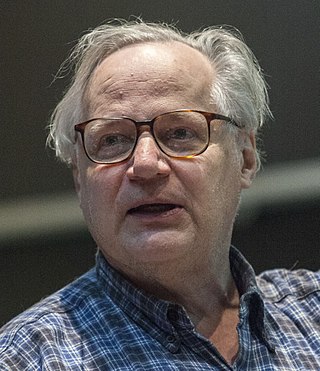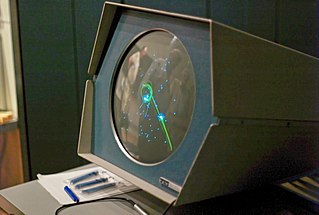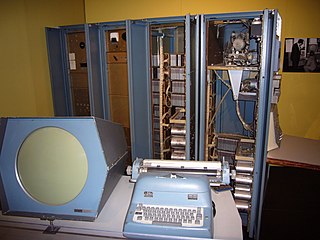The terms foobar, foo, bar, baz, and others are used as metasyntactic variables and placeholder names in computer programming or computer-related documentation. They have been used to name entities such as variables, functions, and commands whose exact identity is unimportant and serve only to demonstrate a concept. The style guide for Google developer documentation recommends against using them as example project names because they are unclear and can cause confusion.

In a positive connotation, a hacker is a person skilled in information technology who achieves goals by non-standard means. Though the term hacker has become associated in popular culture with a security hacker – someone with knowledge of bugs or exploits to break into computer systems and access data which would otherwise be inaccessible to them – hacking can also be utilized by legitimate figures in legal situations. For example, law enforcement agencies sometimes use hacking techniques to collect evidence on criminals and other malicious actors. This could include using anonymity tools to mask their identities online and pose as criminals. Likewise, covert world agencies can employ hacking techniques in the legal conduct of their work. Hacking and cyber-attacks are used extra-legally and illegally by law enforcement and security agencies, and employed by state actors as a weapon of legal and illegal warfare.

The PDP-1 is the first computer in Digital Equipment Corporation's PDP series and was first produced in 1959. It is famous for being the most important computer in the creation of hacker culture at the Massachusetts Institute of Technology, Bolt, Beranek and Newman and elsewhere. The PDP-1 is the original hardware for playing history's first game on a minicomputer, Steve Russell's Spacewar!
The hacker culture is a subculture of individuals who enjoy—often in collective effort—the intellectual challenge of creatively overcoming the limitations of software systems or electronic hardware, to achieve novel and clever outcomes. The act of engaging in activities in a spirit of playfulness and exploration is termed hacking. However, the defining characteristic of a hacker is not the activities performed themselves, but how it is done and whether it is exciting and meaningful. Activities of playful cleverness can be said to have "hack value" and therefore the term "hacks" came about, with early examples including pranks at MIT done by students to demonstrate their technical aptitude and cleverness. The hacker culture originally emerged in academia in the 1960s around the Massachusetts Institute of Technology (MIT)'s Tech Model Railroad Club (TMRC) and MIT Artificial Intelligence Laboratory. Hacking originally involved entering restricted areas in a clever way without causing any major damage. Some famous hacks at the Massachusetts Institute of Technology were placing of a campus police cruiser on the roof of the Great Dome and converting the Great Dome into R2-D2.

Hackers: Heroes of the Computer Revolution (ISBN 0-385-19195-2) is a book by Steven Levy about hacker culture. It was published in 1984 in Garden City, New York by Doubleday. Levy describes the people, the machines, and the events that defined the Hacker culture and the Hacker Ethic, from the early mainframe hackers at MIT, to the self-made hardware hackers and game hackers.

Richard D. Greenblatt is an American computer programmer. Along with Bill Gosper, he may be considered to have founded the hacker community, and holds a place of distinction in the communities of the programming language Lisp and of the Massachusetts Institute of Technology (MIT) Artificial Intelligence Laboratory.
Cruft is a jargon word for anything that is left over, redundant and getting in the way. It is used particularly for defective, superseded, useless, superfluous, or dysfunctional elements in computer software.

Stephen Russell, also nicknamed "Slug", is an American computer scientist most famous for creating Spacewar!, well known for being the first widely distributed video game.

Jack Bonnell Dennis is an American computer scientist and Emeritus Professor of Computer Science and Engineering at Massachusetts Institute of Technology.

The Cecil and Ida Green Building, also called the Green Building or Building 54, is an academic and research building at the Massachusetts Institute of Technology (MIT) in Cambridge, Massachusetts. The building houses the Department of Earth, Atmospheric, and Planetary Sciences (EAPS). It is one of the tallest buildings in Cambridge.
Stewart Nelson is an American mathematician and programmer from The Bronx who co-founded Systems Concepts.
Mac Hack is a computer chess program written by Richard D. Greenblatt. Also known as Mac Hac and The Greenblatt Chess Program, it was developed at the Massachusetts Institute of Technology. Mac Hack VI was the first chess program to play in human tournament conditions, the first to be granted a chess rating, and the first to win against a person in tournament play. A pseudocode for the program is given in Figure 11.16 of.

Alan Kotok was an American computer scientist known for his work at Digital Equipment Corporation and at the World Wide Web Consortium (W3C). Steven Levy, in his book Hackers: Heroes of the Computer Revolution, describes Kotok and his classmates at the Massachusetts Institute of Technology (MIT) as the first true hackers.

Spacewar! is a space combat video game developed in 1962 by Steve Russell in collaboration with Martin Graetz, Wayne Wiitanen, Bob Saunders, Steve Piner, and others. It was written for the newly installed DEC PDP-1 minicomputer at the Massachusetts Institute of Technology. After its initial creation, Spacewar! was expanded further by other students and employees of universities in the area, including Dan Edwards and Peter Samson. It was also spread to many of the few dozen installations of the PDP-1 computer, making Spacewar! the first known video game to be played at multiple computer installations.
Peter R. Samson is an American computer scientist, best known for creating pioneering computer software for the TX-0 and PDP-1.

Expensive Desk Calculator by Robert A. Wagner is thought to be computing's first interactive calculation program.
Expensive Tape Recorder is a digital audio program written by David Gross while a student at the Massachusetts Institute of Technology. Gross developed the idea with Alan Kotok, a fellow member of the Tech Model Railroad Club. The recorder and playback system ran in the late 1950s or early 1960s on MIT's TX-0 computer on loan from Lincoln Laboratory.
T-Square is an early drafting program written by Peter Samson assisted by Alan Kotok and possibly Robert A. Saunders while they were students at the Massachusetts Institute of Technology and members of the Tech Model Railroad Club.
The Jargon File is a glossary and usage dictionary of slang used by computer programmers. The original Jargon File was a collection of terms from technical cultures such as the MIT AI Lab, the Stanford AI Lab (SAIL) and others of the old ARPANET AI/LISP/PDP-10 communities, including Bolt, Beranek and Newman, Carnegie Mellon University, and Worcester Polytechnic Institute. It was published in paperback form in 1983 as The Hacker's Dictionary, revised in 1991 as The New Hacker's Dictionary.
Robert Alan Saunders is an American computer scientist, most famous for being an influential computer programmer. Saunders joined the Tech Model Railroad Club (TMRC) led by Alan Kotok, Peter Samson, and himself. They then met Marvin Minsky and other influential pioneers in what was then known as Artificial Intelligence.










